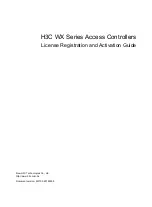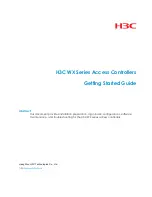
Applications
900-0209-01-00 Rev A
69
The FLEXmax 100 controller, when equipped with the Remote Temperature Sensor (RTS), will
compensate for temperature. The RTS is attached to a single battery near the center of the bank.
When charging, the RTS will increase or decrease the charge voltage by 5 mV per degree Celsius per
battery cell. This setting affects the
Absorbing
and
Float
set points. Equalization is not compensated
in the FLEXmax 100.
There can be side effects to temperature compensation. During cold weather, a battery often requires a
higher charging voltage. Some inverters might not accommodate these higher voltages and can shut
down during charging, cutting off power to their loads. In addition, some battery manufacturers specify
not to exceed a certain voltage due to the risk of battery damage.
To accommodate these problems, the FLEXmax 100 has adjustable compensation limits. It also has an
adjustable rate of compensation (“slope”) to meet the requirements of certain batteries. The default slope
value is 5 mV per degree C.
When the system includes an OutBack HUB Communications Manager and a system display, only one
RTS is needed for multiple inverters and charge controllers.
See page 43 for more information on these items.
Table 14
Examples of Compensation
Cells (volts) Slope Value Temp 25° ±
Calculation
Total Compensation
12 (24 Vdc)
3 mV
36°C
+11
12 × 0.003 × 11
–0.4 Vdc
18 (36 Vdc)
5 mV
26°C
+1
18 × 0.005 × 1
–0.1 Vdc
24 (48 Vdc)
6 mV
0°C
-25
24 × 0.006 × 25
+3.6 Vdc
FLEXnet DC Battery Monitor (FN-DC)
The OutBack FLEXnet DC will work normally if it is networked with the FLEXmax 100 and OutBack
inverters. This requires a HUB Communications Manager.
If the FN-DC is networked exclusively with FLEXmax 100 charge controllers and a HUB product, jumper
J4
must be in the left-hand position as shown in item
A
below. This position connects pins
AGND
and
ISO-GND
. The FN-DC will not function until this is done.
Any devices connected to the
A
UX
+ and
A
UX
– terminals should be electrically isolated. (Examples
include, but are not limited to, coil relays, optical isolators, or fans.)
CAUTION: Equipment Damage
Using non-isolated devices in this application can damage the controller and other devices.
This damage is not covered under warranty.
Figure 55 Position of J4 for the FN-DC
A








































